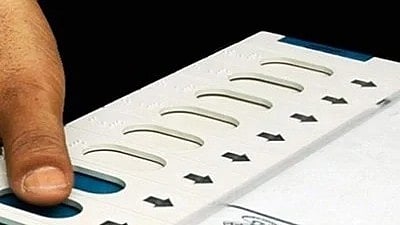Shanghai: As India's electric vehicle market is poised to exceed USD 100 billion by 2030, Chinese EV startup NETA Auto is gearing up to enter the fray. With India being the third-largest automobile market globally, NETA is currently studying local market dynamics and consumer needs before making a foray into the country.
In an exclusive interview with The Free Press Journal, top functionaries of the Shanghai-based NETA Auto revealed company's plans to tap into India's vibrant EV sector, which is expected to account for over 40 per cent of the total automotive market by 2030.
With a strong presence already established in Southeast Asia, NETA is confident about its prospects in India, citing its differentiated approach and comprehensive global strategy as key advantages.

NETA has full-stack self-developed products, platforms and Hozi technology, which can provide products for users in the range of 15,000-45,000 dollars | Free Press Journal
Here are some excerpts from the interview:
Q&A
1. Is NETA planning to enter the Indian market? Has the company begun any talks regarding this with the Indian government?
NETA recognises the immense potential and vibrant opportunities in the Indian market. India is the third-largest automobile market globally, with significant growth expected in the electric vehicle (EV) sector. By 2030, the Indian EV market is projected to exceed USD 100 billion, potentially representing over 40 per cent of the total automotive market.
We are currently exploring and studying the local market dynamics, conducting market research, and analysing consumer needs. We are very enthusiastic about the possibilities. Once the market entry conditions are met, we will discuss the entry plan with the relevant organisation.
2. How does NETA see itself compared to other electric car companies in China?
As a well-known Chinese automobile brand, NETA pays attention to building capacity that differentiates NETA from other Chinese brands. Firstly, NETA has made significant inroads into emerging markets, particularly in Southeast Asia, where it has established a strong presence. For example, in 2023, NETA's electric vehicles ranked among the top three in Southeast Asia's new energy passenger car market.
The achievement in Southeast Asia is due to the advantage of forecasted product launch strategy and local production.
Additionally, NETA's global strategy encompasses a comprehensive approach to international expansion.

Chinese EV startup NETA Auto is gearing up to enter the fray. With India being the third-largest automobile market globally. |
The company has set up manufacturing and assembly plants in key regions, including "1 complete vehicle plant, 2 complete vehicle component bases, 3 overseas KD (knock-down) factories, and 4 parts factories," ensuring a robust and sustainable growth model.
This strategic deployment not only enhances production capacity but also aligns with local market needs, facilitating a more resilient and adaptable business model.
NETA has full-stack self-developed products, platforms and Hozi technology, which can provide products for users in the range of 15,000-45,000 dollars, in order to meet the young, intelligent and electric needs of automotive consumers.
3. What are the challenges faced while approaching different countries for entering their EV market?
Entering different countries' EV markets presents several challenges, including varying consumer preferences, certification of law and regulations, and infrastructural readiness.
4. What are the sales volumes of NETA in 2023-24?
In 2023, NETA Auto achieved significant sales milestones by delivering a total of 127,496 vehicles across all its models, with more than 20,000 units sold in overseas markets. By the end of May 2024, the cumulative exports of NETA had reached an impressive 35,000 units.
5. Will NETA venture into heavy vehicles like trucks and tempo, apart from cars?
NETA has always adhered to the values of "Tech for All" with the vision of” Touchable Smart EV” since the establishment of the brand, NETA could provide products that addressed mainstream needs from A-segment to E-segment cars.
The company plans to launch 7 models by the end of 2024, serving over 420,000 users worldwide with high-quality, intelligent new energy travel solutions.

.jpg)









